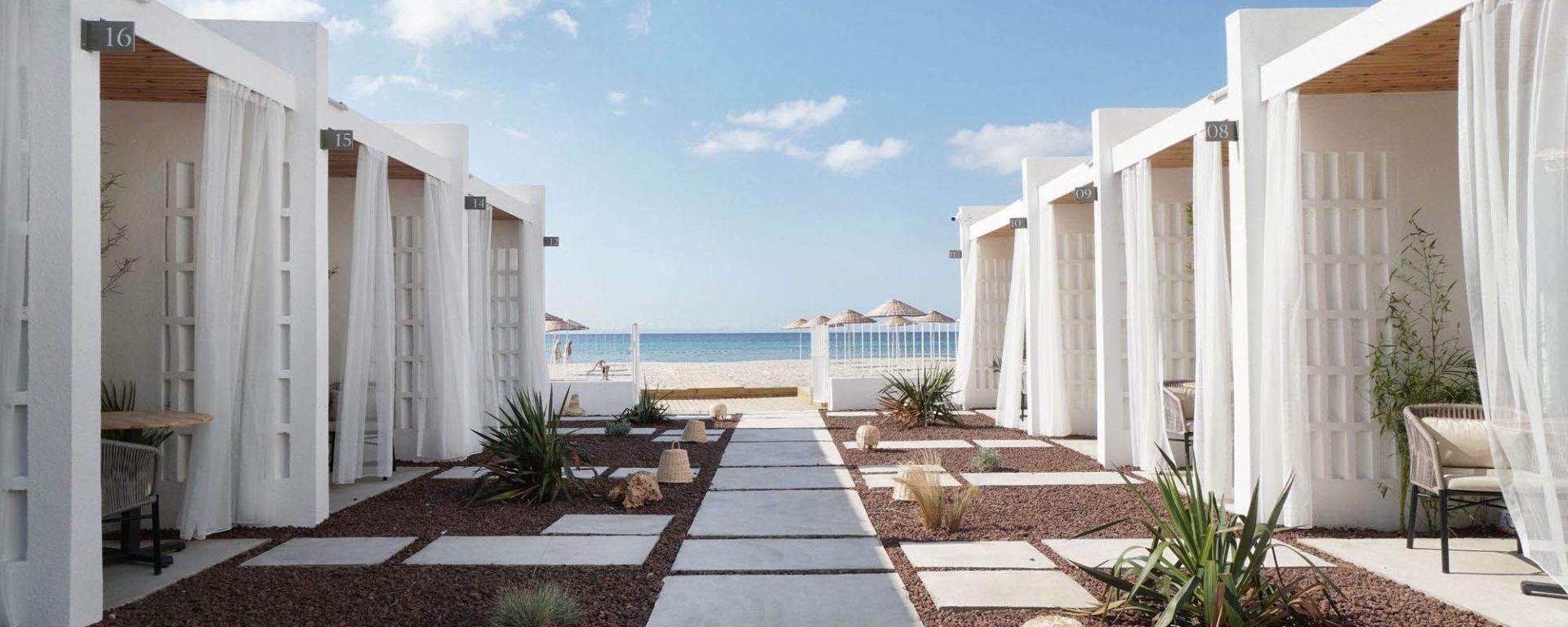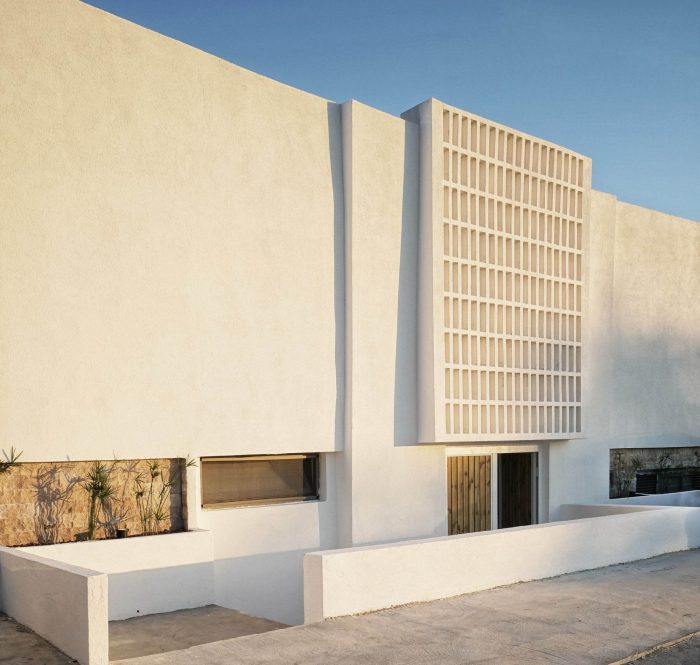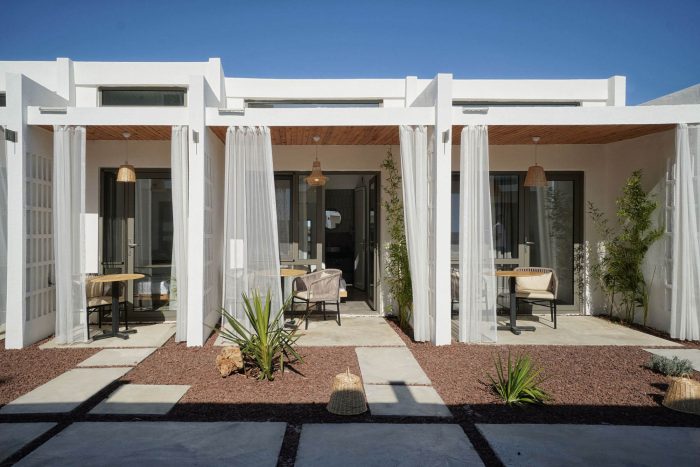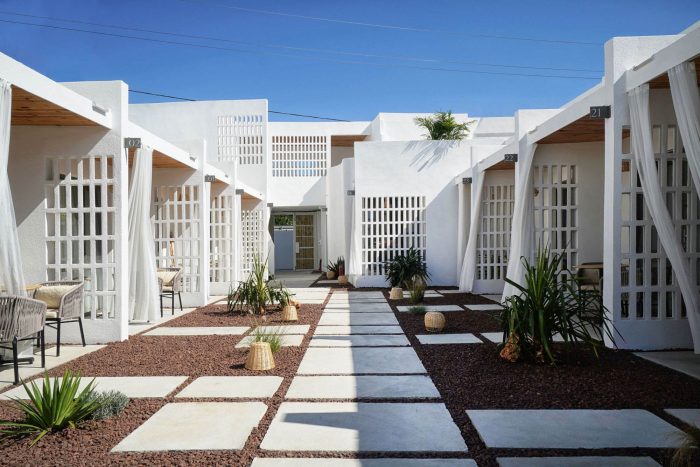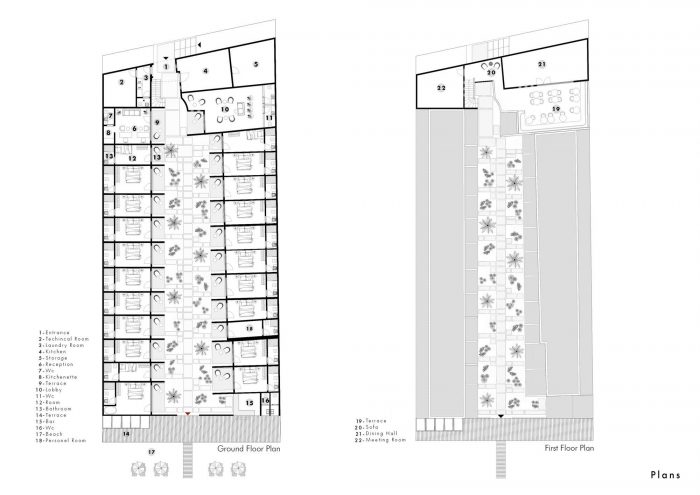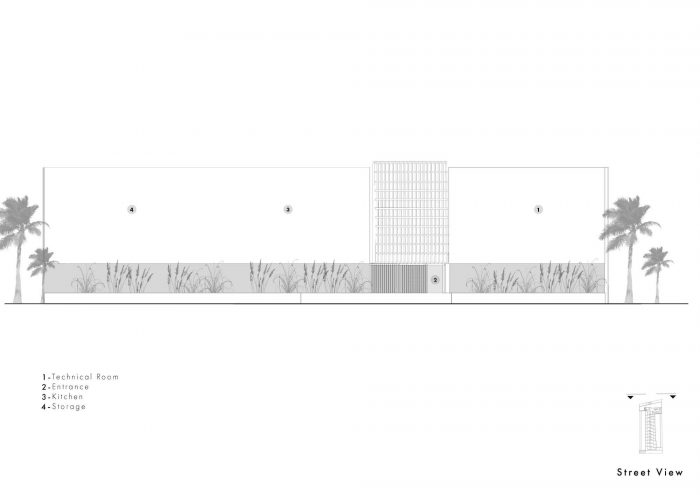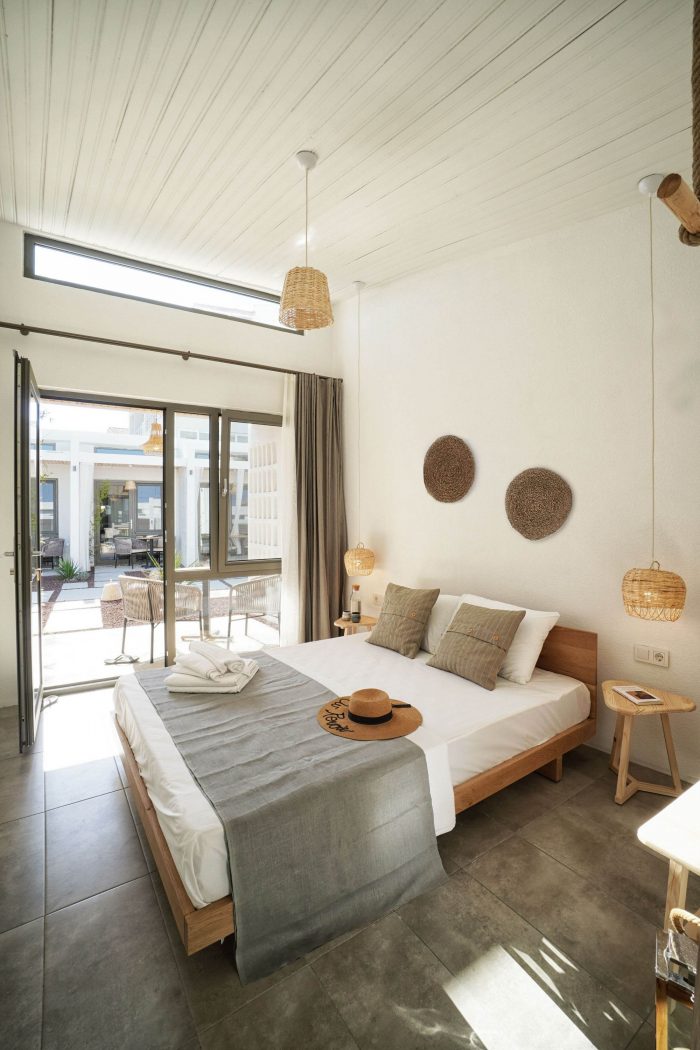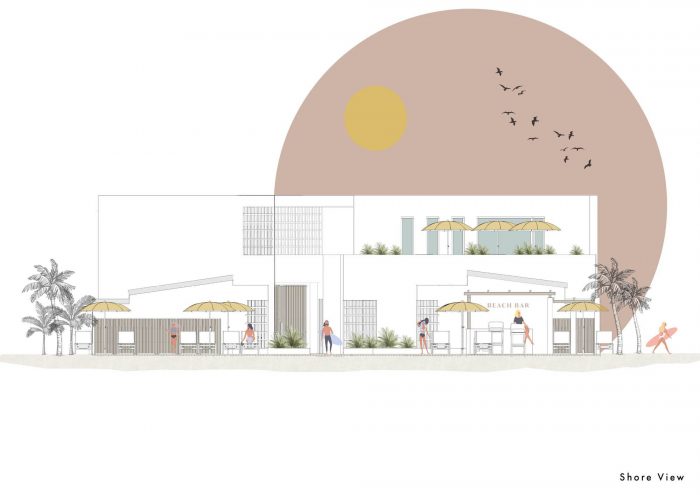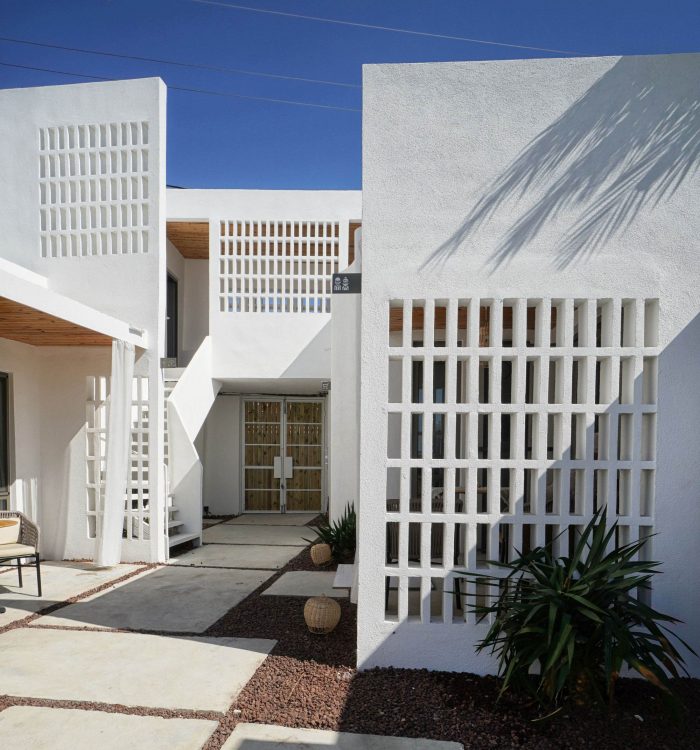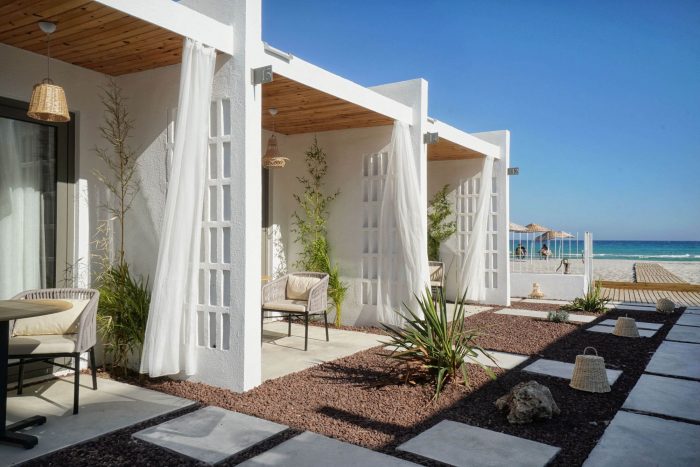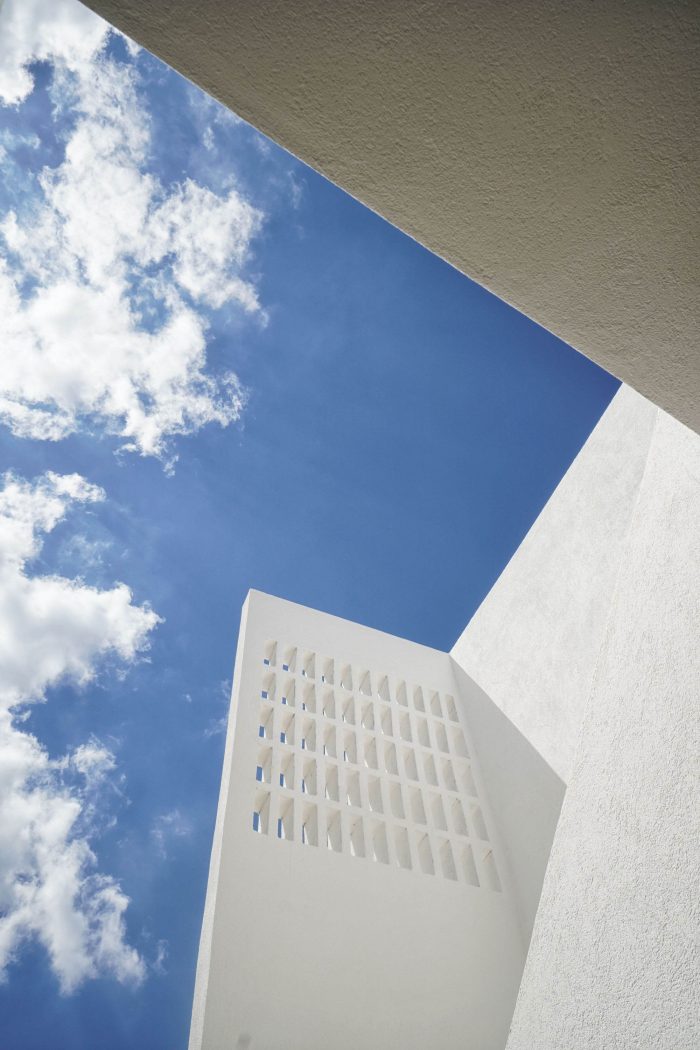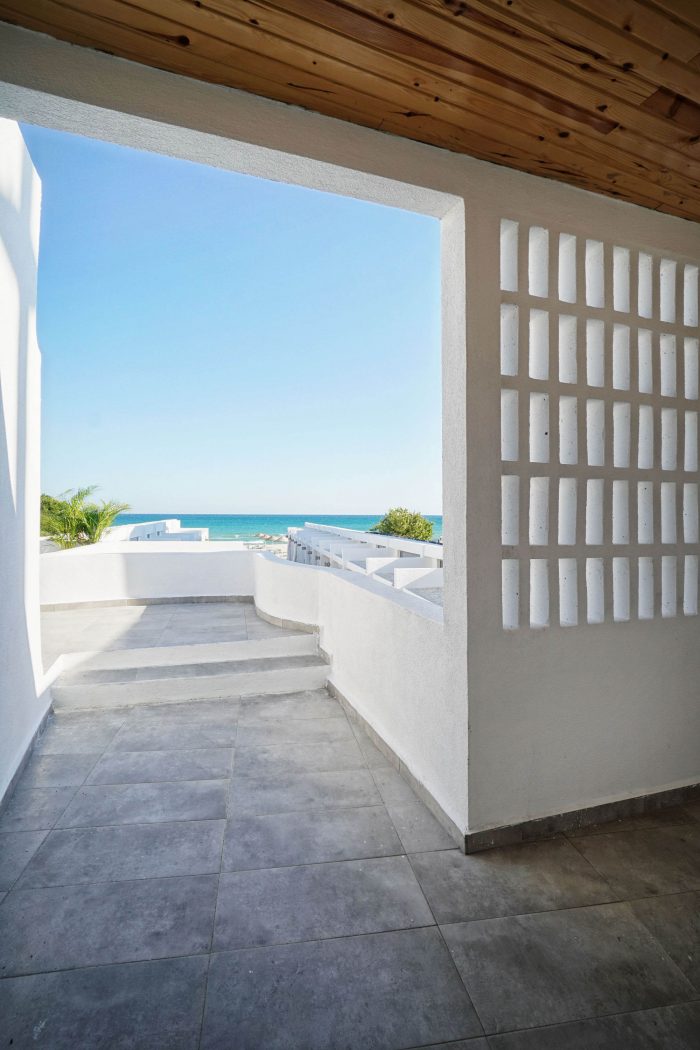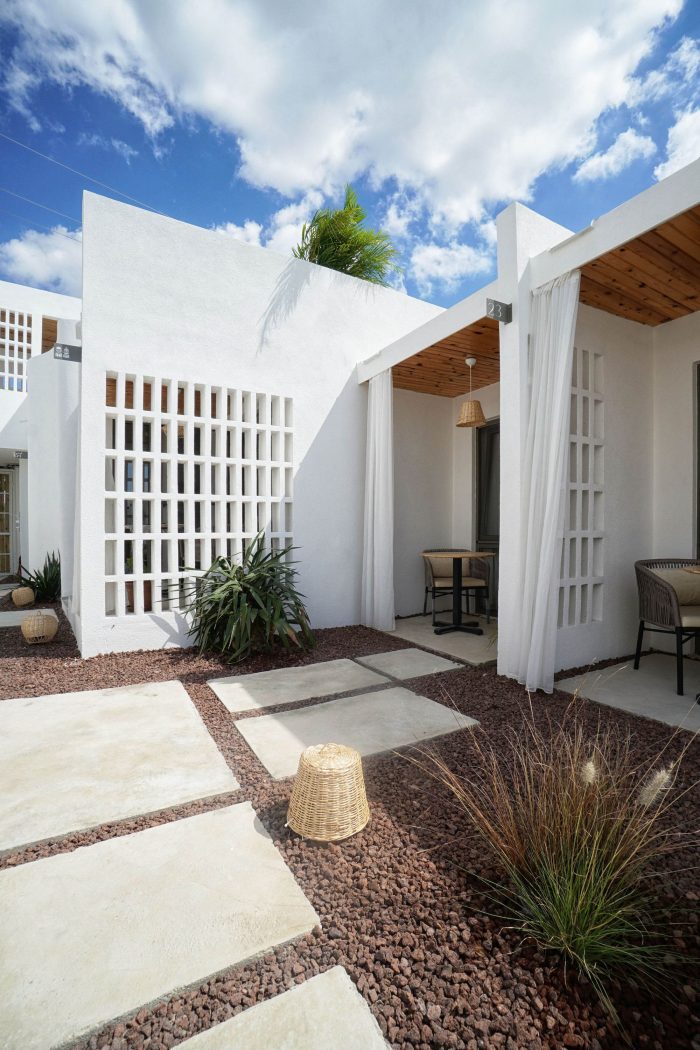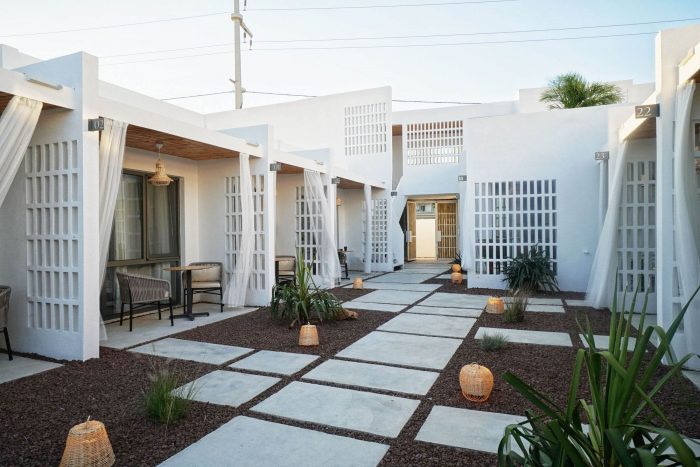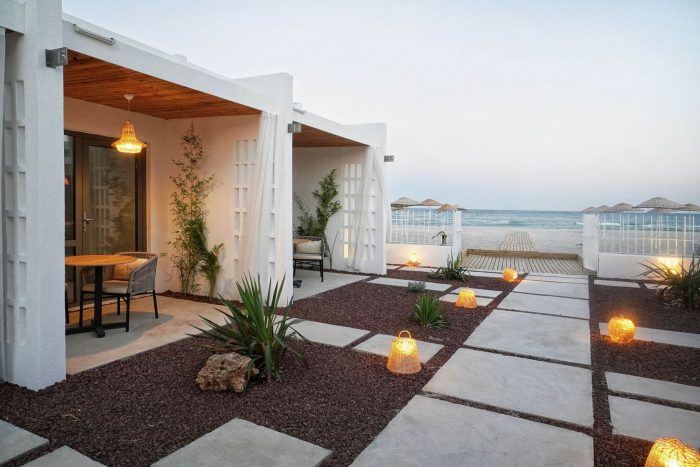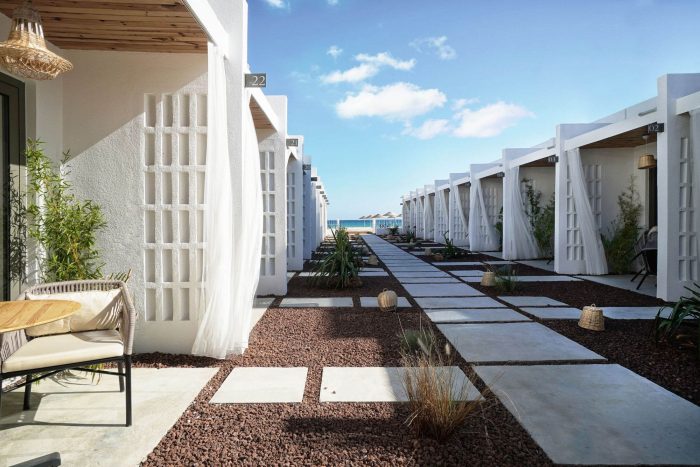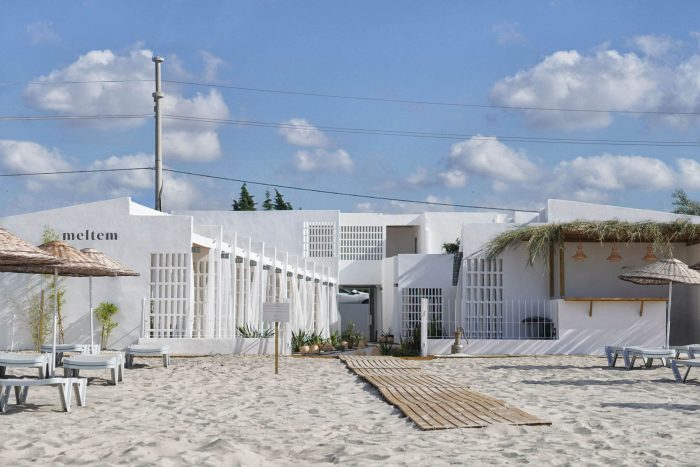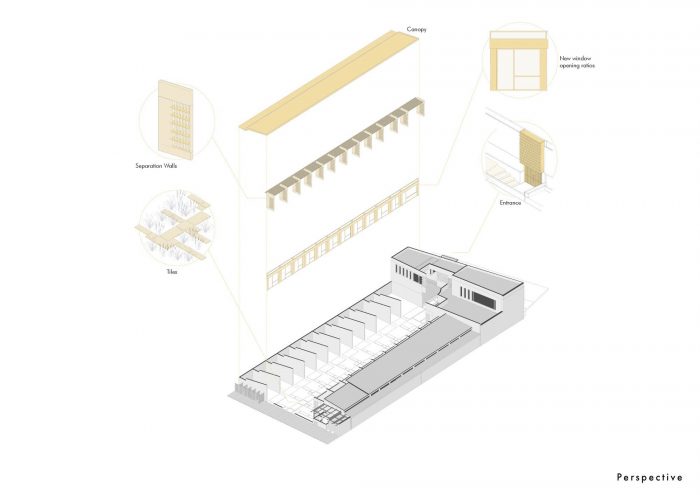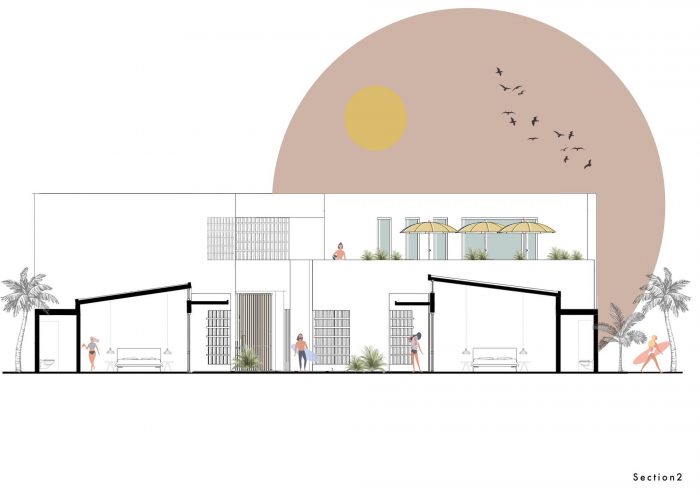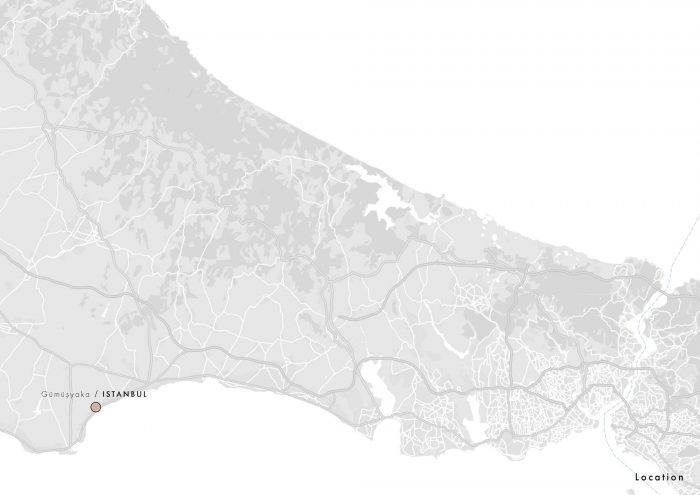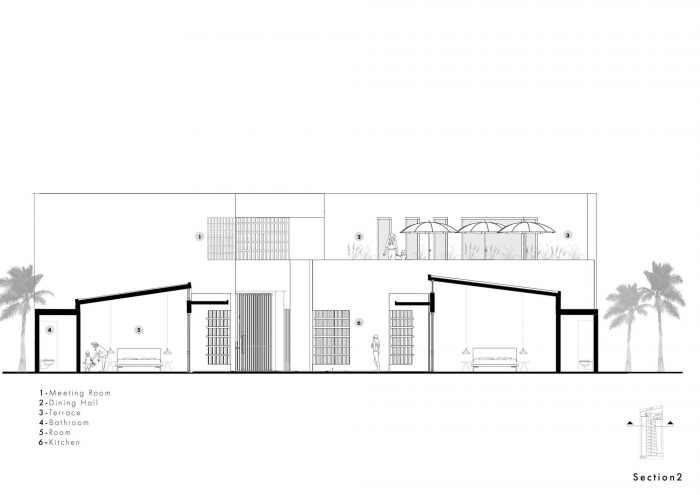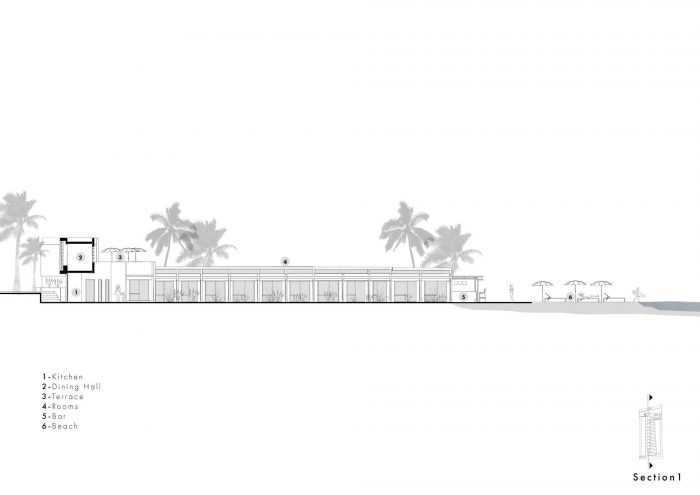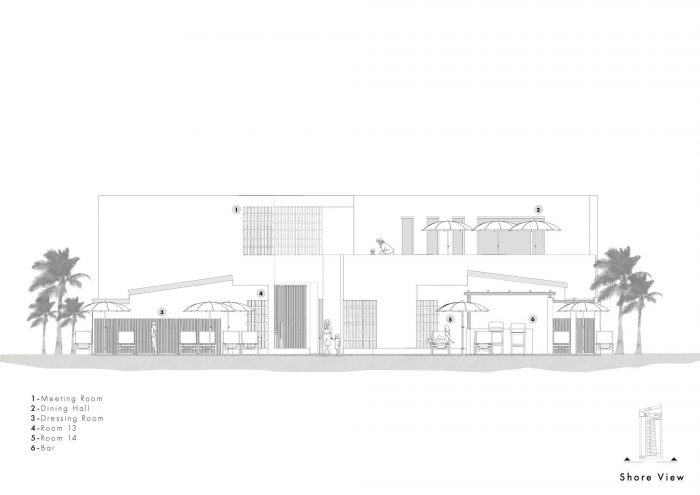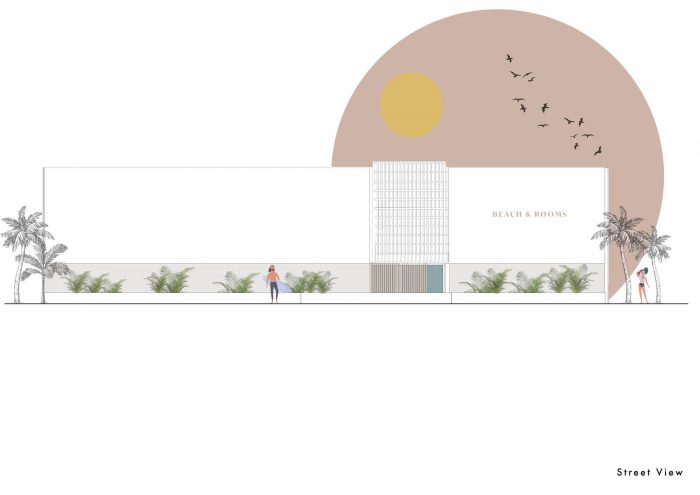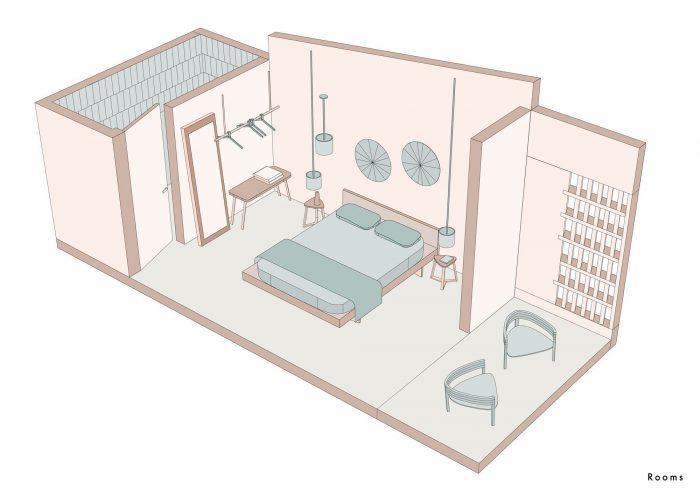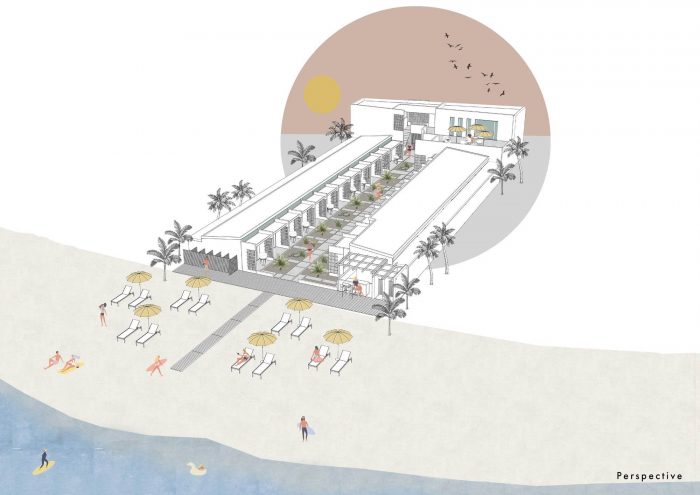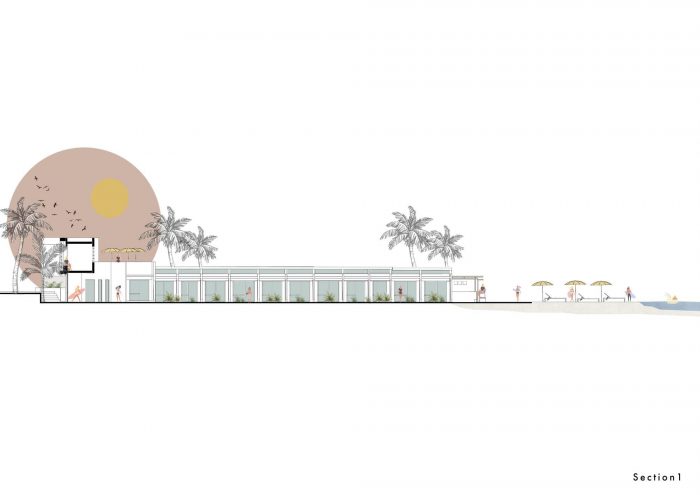该建筑于1975年开始作为露营区建设,并随着时间的推移,通过衔接进行区分,由theCATwork重新进行功能设计,通过保留其现有的质量来满足今天的需求。目前,该结构位于欧洲-伊斯坦布尔公路和马尔马拉海海岸线之间的距离不断缩小的地区,被放置在地块周边,连续不断。
The building, which was started to be built as a camping area in 1975 and differentiated by articulation over time, was re-functionalized and designed by theCATwork to meet the needs of the today by preserving its existing mass. Currently, the structure, which is located in an area where the distance between the Europe-Istanbul road and the Marmara Sea coastline is narrowing, is placed on the parcel perimeters and consecutively.
该结构是在这两条线之间形成一个向海开放的宽阔的内院/走廊上形成的,随着时间的推移,由凉亭和附在房间前面的硬地板院子支撑着,形成了它的最终形态。该建筑于1975年开始建造,当时是一个露营区,自伊斯坦布尔西马尔马拉海岸作为避暑胜地吸引了大量的关注后,它以其45年的历史在海岸轮廓中占有一席之地。为了使这个建筑适应今天的需要和需求,我们很重视保留它在城市用户记忆中的地位,以及它目前的布局和高度。
The structure, which is shaped over the formation of a wide inner courtyard / corridor opening to the sea between these two lines, has taken its final form by being supported by gazebos and hard floor courtyards attached to the front of the rooms over time. The construction of the building started in 1975 as a camping area, and it has taken its place in the coastal silhouette with its 45 years of history since the years when Istanbul West Marmara coasts attracted great attention as a summer resort. In order to adapt this building to today’s needs and demands, importance has been attached to preserving its place in the city-user memory with its current layout and height.
为了这个目的,构成这个大规模认知的结构元素被保留在它们的主线上。根据固体/空隙率、景观和功能/操作进行了安排。结构;由于它是伊斯坦布尔的一个重要的度假区,而且在开始建设的几年里,它位于提供伊斯坦布尔和欧洲之间交通的主轴上,所以它首先演变成一个适合日常使用的结构,后来又演变成 “露营区 “和汽车旅馆。根据今天的需求和要求,它被设计成有22个房间的精品酒店的功能,其中海滩的使用被强调。
For this purpose, the structural elements that make up this mass perception are preserved in their main lines. Arrangements have been made based on solid / void rates, landscape and function / operation. Structure; Since it is an important resort area for Istanbul and it is located on the main axis that provides transportation between Istanbul and Europe in the years when it was started to be built, it has evolved into a structure suitable for daily use in the first place, and later for ‘camping area’ and motel use. In line with today’s needs and demands; It is designed with the function of a 22-room boutique hotel where beach use is highlighted.
根据这种转变带来的功能需求;随着新的空间安排,如接待处、大厅、会议区、餐厅、厨房、露台区、员工室,在房间的内部空间也按照新的概念进行了设计。为了改造新的露台区,每个露台区都向中心的内院/走廊区(流通区)开放,并将位于对面和连续的房间单元连接起来,成为分离的单元;内院/走廊区被设计为中心的单一步行轴和提供从房间进入该轴的路径。它的目的是强调步行轴线,并通过用景观安排支持这些步行轴线以外的区域,创造一个通向大海的景观走廊。
In line with the functional needs brought about by this transformation; With the new space arrangements such as reception, lobby, meeting area, restaurant, kitchen, terrace area, staff room, designs in accordance with the new concept were made in the interior spaces of the rooms. In order to transform the new terrace areas, each opening to the inner courtyard / corridor area (circulation area) in the center, and joining the room units that are located opposite and consecutively, into separating units; The inner courtyard / corridor area is designed as a single walking axis in the center and paths that provide access to this axis from the rooms. It is aimed to emphasize the walking axes and to create a landscape corridor opening to the sea by supporting the areas other than these walking axes with landscape arrangements.
此外,在这些露台上,每个房间都直接连接到侧面的房间单元和内院/走廊,为了支持所要创造的分离;使用了半透光墙和遮阳窗帘。为了提供房间露台之间的分隔;过去部分存在的分隔墙被扩展成半透光的方式,使用户能够从每个露台与大海建立视觉接触。为了使这种半渗透性既能提供与大海的视觉关系,又能保持分离,所打开的缝隙被设计成一个斜角。
In addition, in these terraces, each of room is directly connected to the side room units and the inner courtyard / corridor, in order to support the separation desired to be created; semi-permeable walls and sunshade curtains were used. In order to provide separation between the room terraces; The dividing walls, which were partially present in the past, were extended in a semi-permeable manner that would allow users to establish visual contact with the sea from each terrace. In order for this semi-permeability to provide both a visual relationship with the sea and to maintain separation, the gaps opened are designed to form an oblique angle.
这些半渗透性的元素,塑造了建筑的主要概念;通过在希望构建内部-外部、光影、全空关系的地方使用它,在整个建筑中创造了一种连续性。除了这个设计,通过使用遮阳窗帘在每个房间前创造了独立的区域,以便在室内/庭院走廊关系中提供露台用途的分离。
These semi-permeable elements that shape the main concept of the building; A continuity has been created in the whole building by using it in places where interior-exterior, light-shadow, full-empty relationships are desired to be constructed. In addition to this design, separate areas were created in front of each room by using sunshade curtains in order to provide the separation of the terrace uses in the interior / courtyard corridor relationship.
对于建筑的内部设计,它的目的是创造一个简单的地方,在那里海滩的使用很突出,而不是一个标准的酒店概念。房间单元以最简单的形式带入标准类型;通过将浴室单元放置在包裹墙上的不透明外墙,并将床的摆放方向面向大海来解决。室内使用的可移动元素设计得很简单,以满足建筑使用者的日常需求,并优先考虑海滩功能。
For the interior design of the building; It is aimed to create places with a simplicity where the use of the beach stands out rather than a standard hotel concept. Room units brought to a standard type in its simplest form; It was solved by placing the bathroom units on the opaque facades on the parcel walls and furnishing the bed directions facing the sea. The movable elements used in the interior are designed in a simplicity to meet the daily needs of the building users with the priority of the beach function.
Architects: TheCATWORK
Area: 1000 m²
Year: 2020
Manufacturers: SISECAM, Asaş, Caris, Cata, Creavit, Filliboya, MSK Furniture
Design Team:TheCATWORK
Clients:ARNC
Graphic Designer:Stories Studio
Landscape:TheCATWORK
City:İstanbul
Country:Turkey

